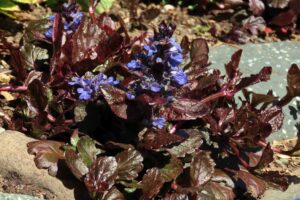Allium flavum
| Allium flavum Family: Liliaceae (AL-ee-um FLAH-vum) Common name: ornamental onion; small yellow onion |
|
| Description: A bulbous herbaceous perennial which produces an umbel of lemon-yellow, bell-shaped flowers in late spring through early summer. Narrow, strap-like, blue-green leaves will wither as the flowers mature.
Special Notes: An heirloom dating back to the late 1750s. Native to region surrounding the Mediterranean, Black and Caspian Seas; France, Morocco to Iran, Kazakhstan. A relative to culinary onions and garlic. Good for containers and rockeries. Plant bulbs 3 – 4 times their own depth in autumn. Naturalizes to create a pleasing display. Attracts bees. Can fall prey to the same diseases which afflict onions and garlic. Deer resistant.
Awards: Royal Horticultural Society’s Award of Garden Merit (AGM) in 1993.
Posted on February 17, 2021 |
|
Garden Tip: Best homemade plant labels
by Leslie Cox; Monday; February 15, 2021
Seed sowing will be starting very soon…if it hasn’t already…and you will need plant labels to identify what the seed varieties are in each pot or tray.
By far, the best material I have found for making my own labels are plastic venetian blinds and for several reasons:
- easy to cut to size needed…much easier than cutting up a yogurt tub
- easy to write on
- use a lead pencil instead of a permanent marker
- easily readable
- erasable so you can re-use the labels
- name label will withstand weather for a couple of years, or more
- plastic blinds can often be found in thrift stores for a reasonable price…and if not,
- are not expensive to buy from a discount store when you consider how many labels you can get out of even the smallest size blind offered for sale
It should be noted that plastic blinds are better than metal ones for making plant labels. Metal labels have sharp edges that can make painful cuts when handled.
Metal also does not accept pencil or ink very well. Can be difficult to read…or worse…and the writing may rub off when label is handled.
Tomato ‘Tiny Tim’
|
Lycopersicon esculentum var.cerasiforme |
|
|
Days to Maturity: 45 – 55 from transplanting Description: An open-pollinated, dwarf bush (determinate), high-yielding variety with deep green leaves. Clusters of globe-shaped, red fruits ½ – ¾ in (1.3-2 cm) in diameter, weighing 0.4 – 0.5 oz (12-14 gr) from mid-summer to late summer. Special Notes: This popular tiny tomato was bred by Dr. Albert F. Yeager, specifically to be grown in pots, and introduced in 1945. In fact, it does not do well in the ground. Can be grown year-round indoors. Its parents are Tomato ‘Window Box’ and Tomato ‘Red Currant’ (1700s). May need staking to help stalk support fruit clusters as the weight of the yield can outweigh the plant’s weight 3:1. Plant maintains dwarf height and high-yield production when placed in full sun. Will tolerate less sunlight but plant will become lanky, less tidy and yield less fruits. How to Use: Snacking; in salads Pests & Diseases: Tolerant of, or resistant to Alternaria alternata sp. lycopersici (Alternaria stem canker) and Stemphylium solani (grey leaf spot) In our Zone 7a garden: I grew these one year in small pots on the front porch railing. Very productive. Flavour a mixture of sweet and tart. Regret I did not bring the 2 plants indoors at the end of August to keep them going over the winter. Apparently, this is doable. Posted on February 13, 2021
|
|
How To: Clean clay pots
by Leslie Cox; Monday; February 8, 2021
 Are your lovely clay pots streaked with white and green deposits all over the outside?
Are your lovely clay pots streaked with white and green deposits all over the outside?
The white is caused by an accumulation of salt which has leeched out from the fertilizer you used to keep your potted plant, or plants, healthy as well as the salt which is in the clay itself. The green is naturally occurring algae which forms on damp surfaces.
Don’t despair! There is an easy way to clean up your clay pots for the new gardening season. Just combine equal amounts of water, white vinegar and rubbing alcohol in a suitable spray bottle.
Spray the cleaning mixture on the outside of your clay pot and scrub with a handled bristle brush. Allow the clay pot to dry thoroughly before you fill it with soil and a plant…or plants.
NOTE: LABEL THE BOTTLE IMMEDIATELY!
You do not want to accidently spray your young seedlings with this mixture.
Ajuga reptans BLACK SCALLOP


